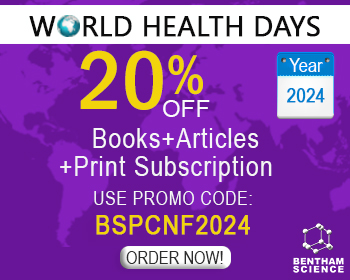Abstract
Melanoma is the deadliest type of skin cancers, accounting for more than 80% of skin cancer mortality. Although melanoma was known very early in the history of medicine, treatment for this disease had remained largely the same until very recently. Previous treatment options, including removal surgery and systemic chemotherapy, offered little benefit in extending the survival of melanoma patients. However, the last decade has seen breakthroughs in melanoma treatment, which all emerged following new insight into the oncogenic signaling of melanoma. This paper reviewed the evolution of drug targets for melanoma treatment based on the emergence of novel findings in the molecular signaling of melanoma. One of the findings that are most influential in melanoma treatment is that more than 50% of melanoma tumors contain BRAF mutations. This is fundamental for the development of BRAF inhibitors, which is the first group of drugs that significantly improves the overall survival of melanoma patients compared to the traditional chemotherapeutic dacarbazine. More recently, findings of the role of immune checkpoint molecules such as CTLA-4 and PD1/PD-L1 in melanoma biology have led to the development of a new therapeutic category: immune checkpoint inhibitors, which, for the first time in the history of cancer treatment, produced a durable response in a subset of melanoma patients. However, as this paper discussed next, there is still an unmet need for melanoma treatment. A significant population of patients did not respond to either BRAF inhibitors or immune checkpoint inhibitors. Of those patients who gained an initial response from those therapies, a remarkable percentage would develop drug resistance even when MEK inhibitors were added to the treatment. Finally, this paper discusses some possible targets for melanoma treatment.
Keywords: BRAF, MEK, immunotherapy, clinical trials, melanoma, immune checkpoint molecules.
[http://dx.doi.org/10.1016/0092-8674(89)90976-8] [PMID: 2535967]
[http://dx.doi.org/10.1016/S0959-437X(98)80061-0] [PMID: 9529605]
[http://dx.doi.org/10.1038/nrc969] [PMID: 12509763]
[http://dx.doi.org/10.1073/pnas.85.11.3875] [PMID: 3131765]
[http://dx.doi.org/10.1073/pnas.81.12.3670 ] [PMID: 6587382]
[http://dx.doi.org/10.1097/01.cmr.0000222600.73179.f3] [PMID: 16845322]
[http://dx.doi.org/10.1056/NEJMoa050092] [PMID: 16291983]
[http://dx.doi.org/10.1038/sj.jid.5700026] [PMID: 16417231]
[http://dx.doi.org/10.2147/OTT.S117121] [PMID: 28860801]
[http://dx.doi.org/10.1038/311671a0] [PMID: 6090953]
[http://dx.doi.org/10.1128/MCB.9.7.3114] [PMID: 2674680]
[http://dx.doi.org/10.1046/j.1523-1747.1998.00376.x] [PMID: 9804334]
[http://dx.doi.org/10.1016/j.cell.2015.05.044] [PMID: 26091043]
[http://dx.doi.org/10.1038/nature00766] [PMID: 12068308]
[http://dx.doi.org/10.1186/1479-5876-8-67] [PMID: 20630094]
[http://dx.doi.org/10.1158/1078-0432.CCR-12-0052] [PMID: 22535154]
[http://dx.doi.org/10.1038/bjc.2013.143] [PMID: 23579220]
[http://dx.doi.org/10.1016/j.ejca.2012.11.004] [PMID: 23237741]
[http://dx.doi.org/10.1016/S1470-2045(14)70012-9] [PMID: 24508103]
[http://dx.doi.org/10.1200/JCO.2013.49.8691] [PMID: 23918947]
[http://dx.doi.org/10.1016/S0140-6736(12)60868-X] [PMID: 22735384]
[PMID: 27993793]
[http://dx.doi.org/10.1016/j.phrs.2019.03.006] [PMID: 30877063]
[http://dx.doi.org/10.1158/1078-0432.CCR-14-0776] [PMID: 25096067]
[http://dx.doi.org/10.1007/s40265-013-0095-2] [PMID: 23881668]
[http://dx.doi.org/10.1634/theoncologist.2017-0642] [PMID: 29438093]
[http://dx.doi.org/10.1158/1078-0432.CCR-11-1491] [PMID: 22048237]
[http://dx.doi.org/10.1001/jama.2014.6096] [PMID: 24938562]
[http://dx.doi.org/10.1016/S1470-2045(13)70237-7] [PMID: 23735514]
[http://dx.doi.org/10.1016/S1470-2045(17)30180-8] [PMID: 28284557]
[http://dx.doi.org/10.1158/2159-8290.CD-13-0279] [PMID: 24265152]
[http://dx.doi.org/10.1158/2159-8290.CD-13-0642] [PMID: 24265155]
[http://dx.doi.org/10.1158/2159-8290.CD-13-0617] [PMID: 24265153]
[http://dx.doi.org/10.1016/S1470-2045(16)30122-X] [PMID: 27480103]
[http://dx.doi.org/10.1016/S1470-2045(15)00087-X] [PMID: 26433819]
[http://dx.doi.org/10.1056/NEJMoa1904059] [PMID: 31166680]
[http://dx.doi.org/10.1093/annonc/mdx176] [PMID: 28475671]
[http://dx.doi.org/10.1016/S1470-2045(18)30142-6] [PMID: 29573941]
[http://dx.doi.org/10.1016/S1470-2045(18)30106-2] [PMID: 29477665]
[http://dx.doi.org/10.1056/NEJMoa1708539] [PMID: 28891408]
[http://dx.doi.org/10.1242/dmm.018036] [PMID: 26035842]
[http://dx.doi.org/10.3389/fimmu.2019.00168] [PMID: 30800125]
[http://dx.doi.org/10.1038/s12276-018-0191-1] [PMID: 30546008]
[http://dx.doi.org/10.1016/j.ccell.2015.03.001] [PMID: 25858804]
[http://dx.doi.org/10.1056/NEJMoa1103782] [PMID: 21639808]
[http://dx.doi.org/10.1093/annonc/mdx339] [PMID: 28961848]
[http://dx.doi.org/10.1056/NEJMoa1408868] [PMID: 25265494]
[http://dx.doi.org/10.1056/NEJMoa1412690] [PMID: 25399551]
[http://dx.doi.org/10.1056/NEJMoa1406037] [PMID: 25265492]
[http://dx.doi.org/10.1200/JCO.2014.56.6018] [PMID: 25713437]
[http://dx.doi.org/10.1056/NEJMoa1104621] [PMID: 21639810]
[http://dx.doi.org/10.1056/NEJMoa1003466] [PMID: 20525992]
[http://dx.doi.org/10.1093/annonc/mdt291] [PMID: 23942774]
[http://dx.doi.org/10.1056/NEJMoa1412082] [PMID: 25399552]
[http://dx.doi.org/10.1016/S1470-2045(15)70076-8] [PMID: 25795410]
[http://dx.doi.org/10.1200/JCO.2016.71.8023] [PMID: 28671856]
[http://dx.doi.org/10.1016/S1470-2045(19)30388-2] [PMID: 31345627]
[http://dx.doi.org/10.1016/S1470-2045(16)30126-7] [PMID: 27269740]
[http://dx.doi.org/10.1016/S1470-2045(18)30700-9] [PMID: 30361170]
[http://dx.doi.org/10.1146/annurev.immunol.19.1.565] [PMID: 11244047]
[http://dx.doi.org/10.1126/science.270.5238.985] [PMID: 7481803]
[http://dx.doi.org/10.1016/1074-7613(95)90125-6] [PMID: 7584144]
[http://dx.doi.org/10.1016/S1074-7613(00)80308-8] [PMID: 8758893]
[http://dx.doi.org/10.1126/science.7688139] [PMID: 7688139]
[http://dx.doi.org/10.1016/S1074-7613(00)80333-7] [PMID: 9075931]
[http://dx.doi.org/10.1074/jbc.271.43.26762] [PMID: 8900156]
[http://dx.doi.org/10.1084/jem.174.3.561] [PMID: 1714933]
[http://dx.doi.org/10.1200/JCO.2012.44.6112] [PMID: 23295794]
[http://dx.doi.org/10.1016/S1470-2045(17)30231-0] [PMID: 28359784]
[http://dx.doi.org/10.1056/NEJMoa1611299] [PMID: 27717298]
[http://dx.doi.org/10.1038/nri2326] [PMID: 18500231]
[http://dx.doi.org/10.1016/S1470-2045(15)00083-2] [PMID: 26115796]
[http://dx.doi.org/10.1056/NEJMoa1802357] [PMID: 29658430]
[http://dx.doi.org/10.1056/NEJMoa1503093] [PMID: 25891173]
[http://dx.doi.org/10.1056/NEJMoa1709030] [PMID: 28891423]
[http://dx.doi.org/10.1016/S1470-2045(18)30139-6] [PMID: 29602646]
[http://dx.doi.org/10.1056/NEJMoa1203421] [PMID: 22663011]
[http://dx.doi.org/10.1002/cncr.26724] [PMID: 22180178]
[http://dx.doi.org/10.1056/NEJMoa1200690] [PMID: 22658127]
[PMID: 26347206]
[http://dx.doi.org/10.1056/NEJMoa1002011] [PMID: 20818844]
[http://dx.doi.org/10.1038/ncomms1727] [PMID: 22395615]
[http://dx.doi.org/10.1038/nature09626] [PMID: 21107323]
[http://dx.doi.org/10.1200/JCO.2010.33.2312] [PMID: 21383288]
[http://dx.doi.org/10.1158/0008-5472.CAN-11-0140] [PMID: 21803746]
[http://dx.doi.org/10.1016/j.ccr.2010.11.023] [PMID: 21156289]
[http://dx.doi.org/10.1038/nature09627] [PMID: 21107320]
[http://dx.doi.org/10.1016/j.immuni.2016.06.001] [PMID: 27332730]
[http://dx.doi.org/10.1016/j.ctrv.2016.11.007] [PMID: 27951441]
[http://dx.doi.org/10.1016/j.cell.2017.01.017] [PMID: 28187290]
[http://dx.doi.org/10.1158/2326-6066.CIR-15-0097] [PMID: 26253731]
[http://dx.doi.org/10.1084/jem.20130066] [PMID: 23752227]
[http://dx.doi.org/10.1186/2051-1426-2-3] [PMID: 24829760]
[http://dx.doi.org/10.1038/nature08956] [PMID: 20305636]
[http://dx.doi.org/10.1091/mbc.e04-11-0960] [PMID: 15659645]
[http://dx.doi.org/10.1016/S0092-8674(00)80607-8] [PMID: 10412982]
[http://dx.doi.org/10.1039/C7MD00030H] [PMID: 30108801]
[http://dx.doi.org/10.1200/JCO.2017.35.15_suppl.TPS2618]
[http://dx.doi.org/10.1007/s002800000170] [PMID: 11127943]
[http://dx.doi.org/10.1073/pnas.95.4.1369] [PMID: 9465021]
[http://dx.doi.org/10.1200/JCO.2004.10.112] [PMID: 15084616]
[http://dx.doi.org/10.1158/1078-0432.CCR-08-2658] [PMID: 19351752]
[http://dx.doi.org/10.1007/s10549-007-9726-1] [PMID: 17851757]
[http://dx.doi.org/10.1016/j.bmc.2015.11.043] [PMID: 26706114]
[http://dx.doi.org/10.1021/acs.jmedchem.9b00145] [PMID: 31181882]
[http://dx.doi.org/10.1006/excr.2000.5130] [PMID: 11237521]
[http://dx.doi.org/10.1007/s00018-011-0878-0] [PMID: 22076652]
[http://dx.doi.org/10.1126/science.275.5300.661] [PMID: 9005851]
[http://dx.doi.org/10.1073/pnas.96.5.2110] [PMID: 10051603]
[http://dx.doi.org/10.1046/j.0022-202X.2004.22243.x] [PMID: 15009714]
[http://dx.doi.org/10.1016/j.molcel.2007.02.017] [PMID: 17386267]
[http://dx.doi.org/10.1371/journal.pone.0022769] [PMID: 21829508]
[http://dx.doi.org/10.1038/sj.bjc.6604637] [PMID: 18813315]
[http://dx.doi.org/10.1016/S1470-2045(17)30064-5] [PMID: 28131786]
[http://dx.doi.org/10.1200/JCO.2017.35.15_suppl.TPS9595]
[http://dx.doi.org/10.1111/cas.13923] [PMID: 30588709]
[http://dx.doi.org/10.1056/NEJMoa1813904] [PMID: 31091374]
[http://dx.doi.org/10.1158/1078-0432.CCR-17-0725] [PMID: 28645941]
[http://dx.doi.org/10.1158/2326-6066.CIR-14-0112] [PMID: 25187272]
[http://dx.doi.org/10.1042/BJ20112037] [PMID: 22364283]
[http://dx.doi.org/10.1002/mnfr.201700479] [PMID: 28940752]
[http://dx.doi.org/10.3390/cells5020015] [PMID: 27043634]
[http://dx.doi.org/10.1002/ijc.24748] [PMID: 19609947]
[http://dx.doi.org/10.1074/jbc.M205737200] [PMID: 12140289]
[http://dx.doi.org/10.1038/nri.2017.142] [PMID: 29379212]
[http://dx.doi.org/10.1039/C7FO00090A] [PMID: 28386616]
[http://dx.doi.org/10.2174/18715206113139990078] [PMID: 23272910]
[http://dx.doi.org/10.1016/j.vetmic.2018.10.031] [PMID: 30473339]
[http://dx.doi.org/10.1101/gad.1662308] [PMID: 18519641]
[http://dx.doi.org/10.1158/1078-0432.CCR-15-1110] [PMID: 26490311]
[http://dx.doi.org/10.1007/s10637-015-0218-6] [PMID: 25707361]
[http://dx.doi.org/10.3390/biom9090402] [PMID: 31443495]
[http://dx.doi.org/10.1002/asia.201801762] [PMID: 30714356]
[http://dx.doi.org/10.1016/j.bmc.2019.02.050] [PMID: 30850264]
[http://dx.doi.org/10.1038/s41401-018-0057-z] [PMID: 29991713]
[http://dx.doi.org/10.18632/oncotarget.17730] [PMID: 28537878]
[http://dx.doi.org/10.1074/jbc.271.10.5289] [PMID: 8621375]
[http://dx.doi.org/10.1038/343425a0] [PMID: 1967820]
[http://dx.doi.org/10.1126/science.8456312] [PMID: 8456312]
[http://dx.doi.org/10.1146/annurev.bi.65.070196.001325] [PMID: 8811180]
[http://dx.doi.org/10.1016/j.abb.2010.09.028] [PMID: 20932952]
[http://dx.doi.org/10.1038/nrd1112] [PMID: 12815379]
[http://dx.doi.org/10.2183/pjab.88.41] [PMID: 22450534]
[http://dx.doi.org/10.1371/journal.pone.0110231] [PMID: 25329299 ]
[http://dx.doi.org/10.1007/s10552-015-0530-7 ] [PMID: 25736184]
[http://dx.doi.org/10.1097/EDE.0000000000000189] [PMID: 25304447]
[http://dx.doi.org/10.1200/JCO.2013.49.4757] [PMID: 24190110]
[http://dx.doi.org/10.1053/j.gastro.2017.05.011] [PMID: 28512021]
[http://dx.doi.org/10.1016/S0092-8674(00)00115-X] [PMID: 11057896]
[http://dx.doi.org/10.1194/jlr.R500017-JLR200] [PMID: 16401880]
[http://dx.doi.org/10.1164/ajrccm.157.5.9709020] [PMID: 9603146]
[http://dx.doi.org/10.1073/pnas.1319190110] [PMID: 24367099]
[http://dx.doi.org/10.1074/jbc.272.25.15591] [PMID: 9188444]
[http://dx.doi.org/10.1038/nrm.2015.11] [PMID: 26790532]
[http://dx.doi.org/10.1038/sj.leu.2402196] [PMID: 11516100]
[PMID: 10473109]
[http://dx.doi.org/10.1038/sj.onc.1202792] [PMID: 10435593]
[http://dx.doi.org/10.1016/j.cell.2012.06.024] [PMID: 22817889]
[http://dx.doi.org/10.1158/1078-0432.CCR-11-2109] [PMID: 22228640]
[http://dx.doi.org/10.1158/2159-8290.CD-12-0408] [PMID: 23239741]
[http://dx.doi.org/10.1006/bbrc.1998.8911] [PMID: 9675086]
[http://dx.doi.org/10.1016/j.tcb.2015.05.002] [PMID: 26045258]
[http://dx.doi.org/10.1038/nrc3458] [PMID: 23467301]
[http://dx.doi.org/10.1016/j.cell.2011.09.048] [PMID: 22078877]
[http://dx.doi.org/10.1038/ncb2936] [PMID: 24658687]
[http://dx.doi.org/10.1016/S0016-5085(17)32892-5]
[http://dx.doi.org/10.1158/0008-5472.CAN-15-2613] [PMID: 27197250]
[http://dx.doi.org/10.1016/S0005-2736(03)00016-6] [PMID: 12648772]
[http://dx.doi.org/10.1172/JCI0216390] [PMID: 12208858]
[http://dx.doi.org/10.1016/j.ajpath.2010.11.005] [PMID: 21224077]
[http://dx.doi.org/10.1038/onc.2012.113] [PMID: 22469977]
[http://dx.doi.org/10.1016/S0022-5347(05)64820-3] [PMID: 12050481]
[http://dx.doi.org/10.1016/S0960-0760(98)00027-2] [PMID: 9699867]
[http://dx.doi.org/10.1001/jama.289.24.3243] [PMID: 12824205]
[http://dx.doi.org/10.1210/me.2007-0383] [PMID: 17872378]
[http://dx.doi.org/10.1126/science.1241908] [PMID: 24288332]
[http://dx.doi.org/10.1093/jnci/82.6.460] [PMID: 2313717]
[http://dx.doi.org/10.1093/ije/22.5.772] [PMID: 8282454]
[http://dx.doi.org/10.1200/JCO.2010.31.5200] [PMID: 21422422]
[http://dx.doi.org/10.1073/pnas.0700907104] [PMID: 17428919]
[http://dx.doi.org/10.1016/S0092-8674(02)00872-3] [PMID: 12202038]
[http://dx.doi.org/10.1016/j.abb.2010.06.004] [PMID: 20541520]
[http://dx.doi.org/10.4254/wjh.v4.i6.184] [PMID: 22761969]
[http://dx.doi.org/10.1093/abbs/gms112] [PMID: 23257291]
[http://dx.doi.org/10.1101/gad.891301] [PMID: 11358865]
[http://dx.doi.org/10.2147/OTT.S136484] [PMID: 28553123]
[http://dx.doi.org/10.1158/0008-5472.CAN-06-3377] [PMID: 17283158]
[http://dx.doi.org/10.1016/j.ccell.2016.02.003] [PMID: 26977879]
[http://dx.doi.org/10.1016/j.jnutbio.2018.09.012] [PMID: 30321750]
[http://dx.doi.org/10.3168/jds.2015-10353] [PMID: 26709176]
[http://dx.doi.org/10.1042/BJ20041896] [PMID: 15777286]
[http://dx.doi.org/10.1016/j.bbadis.2009.08.015] [PMID: 19733654]
[http://dx.doi.org/10.1039/C9FO01373C] [PMID: 31501836]
[http://dx.doi.org/10.1146/annurev.med.53.082901.104018] [PMID: 11818483]
[PMID: 11867676]
[PMID: 8725145]
[http://dx.doi.org/10.1016/j.amjcard.2005.12.010] [PMID: 16581329]
[http://dx.doi.org/10.1093/bfgp/ely006] [PMID: 29554204]
[http://dx.doi.org/10.1084/jem.20171576] [PMID: 29743292]
[http://dx.doi.org/10.1016/j.cmet.2019.04.002] [PMID: 31031094]



























